What is Data analytics / Business Intelligence?
Search the keywords “Business Intelligence” (BI) or “Data analytics” during your job search and you will be overwhelmed by the roles that are available in the market. You may have just begun considering your career transition or have been actively researching the role for a while but often, one of the questions that we frequently get asked still stands.
What is the difference between BI and data analytics?
Business intelligence and data analytics are closely related but distinct concepts.
Business intelligence (BI) refers to the technologies, processes, and practices used by organizations to analyze data and transform it into actionable insights that inform business decisions. BI tools and techniques, such as data mining, data visualization, dashboards, reporting, and predictive analytics, can help organizations to identify trends, track key performance indicators (KPIs), discover new opportunities, make data-driven decisions and optimize business operations, and it often involves the use of data visualization and reporting tools to present data in a visual format that is easier to understand.
Data analytics, on the other hand, is the process of examining and manipulating data to uncover insights and draw conclusions. Data analytics can be used to support a wide range of business activities, including marketing, operations, and finance. Data analytics often involves the use of advanced statistical and computational techniques to analyze large and complex data sets, and it can be used to support decision making, identify patterns, and optimize business operations.
In summary, BI is focused on providing organizations with the tools and processes they need to analyze data, while data analytics is focused on the actual analysis of the data itself. Both BI and data analytics are important for modern businesses, and they are often used together to support decision making and optimize business operations.

What is BI used for?
Data is the lifeline of businesses to survive in their increasingly competitive market. As more companies adopt digital transformation into their business, they generate massive amounts of data. However, according to a Forrester report, between 60% and 73% of all data within an enterprise remain unused for analytics. Big data is a huge opportunity for businesses to better understand their environment and operational factors. That being said, it also presents a complex situation because big data is raw, messy, complex, not analyzable and not consumable in its original state. That’s why businesses are constantly looking for ways to make data work, using data and data tools to answer business questions, solve business problems, support business decisions, and create value for businesses and customers.
As market conditions change quickly, businesses rely on real-time data to make quick decisions. However, decision-making becomes difficult with overwhelming amounts of data in complex situations with time constraints. BI allows a business to process big data in real-time and answer 4 questions in a few clicks:
- What happened?
- Why did it happen?
- When did it happen?
- What can we do about it?
BI can be used to analyze data from a variety of sources, such as transactional systems, marketing databases, social media feeds, and machine logs, to provide a comprehensive view of the business. Examples of BI activities include generating reports and dashboards, conducting data analysis, and creating data visualizations. The goal of Business Intelligence is to give organizations a competitive advantage by helping them make faster, more informed decisions based on data rather than gut feelings or intuition. BI can be used to support a wide range of business activities, including financial analysis, market research, and customer relationship management.
Some examples of how BI is impacting the world include:
- Improving customer experiences: BI is being used by organizations to better understand their customers and provide personalized experiences. By analyzing customer data, businesses can identify trends and preferences, which can be used to tailor products and services to meet the specific needs of individual customers. This can lead to improved customer satisfaction and loyalty, as well as increased sales and revenue.
- Optimizing business operations: BI is helping organizations to identify inefficiencies and optimize their operations by analyzing data on processes, resources, and performance. This can lead to cost savings and improved productivity.
- Enhancing decision making: BI is enabling organizations to make more informed and data-driven decisions by providing access to relevant and up-to-date data. This can help businesses to identify new opportunities and make better-informed decisions about strategies and tactics.
- Increasing competitiveness: BI is giving organizations a competitive advantage by helping them to make faster, more informed decisions based on data rather than assumptions. By using BI to identify trends and optimize operations, businesses can stay ahead of the competition and better respond to changing market conditions.

